How To: Apple Notes Has 13 New Features/Updates In iOS 16 You Should Know About
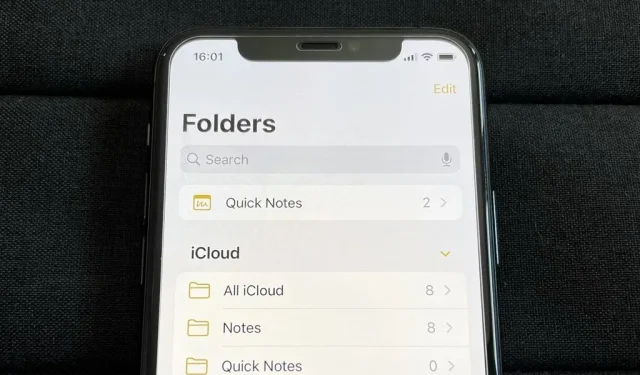
Many Apple apps, including Books, Messages, Photos, Shortcuts, and Weather, are getting major updates in iOS 16. Another app with lots of cool new features to explore is Notes. things you use every day to make lists, save ideas, write down thoughts, create diagrams, draw sketches, record observations, and more.
Could Apple Notes be your favorite note-taking app? I believe that with all the new features in iOS 16, this is possible. Take a look below at what you can expect from the new and updated Notes app. And if you’re brave enough, install the iOS 16 beta to try them all.
1. You can create and use quick notes
Available now in iPadOS 15 and macOS 12, Quick Note lets you quickly jot down ideas, save links, draw sketches, and freehand notes in a new or old Quick Note without leaving the current app or screen you’re using. While you could access iPad or Mac quick notes on your iPhone, iOS 16 gives you all the power of quick notes.
You can add a new “Quick Note”control to the Control Center and then press the button in the Control Center from any app or screen to quickly start a new note and get back to what you were doing.



Alternatively, you can highlight text in an app like Safari to open the New Quick Note option, or use the Share button in any app and choose Add to Quick Note.
For example, when viewing photos, you can quickly add one of them to a new note without having to open the full Notes app. It is also useful for saving links to web pages from any web browser.
Whenever you revisit a photo, web page, or whatever, you’ll see a small pop-up in the bottom right corner of your screen. You can click on the popup to open the note, or click “X”to remove it from the screen. If you need access to the note but not right away, you can ignore it and it will hide off screen, accessible through a small tab, just like in the Picture in Picture player. You can also swipe it off the screen and move the popup or tab to other corners.



Unlike the iPad, you can’t open a popup and start adding to it right from the overlay window. Instead, it will take you straight to the note in the Notes app. Because of this, you can’t switch between Quick Notes either. Apple may add these features in future updates.
2. You can lock notes with your iPhone passcode
Locking your notes isn’t a new feature, but now you don’t have to create and remember a special passcode to unlock all your private notes—you can use your iPhone’s passcode instead. You can still unlock notes with Face ID or Touch ID like before if you don’t want to enter your passcode every time.
To lock a note, press and hold the note, then tap Lock Note. If in the note itself, tap the ellipsis (•••) and then the Lock button. If this is your first time locking a note, you’ll be prompted to “Use iPhone passcode”or create a separate passcode.
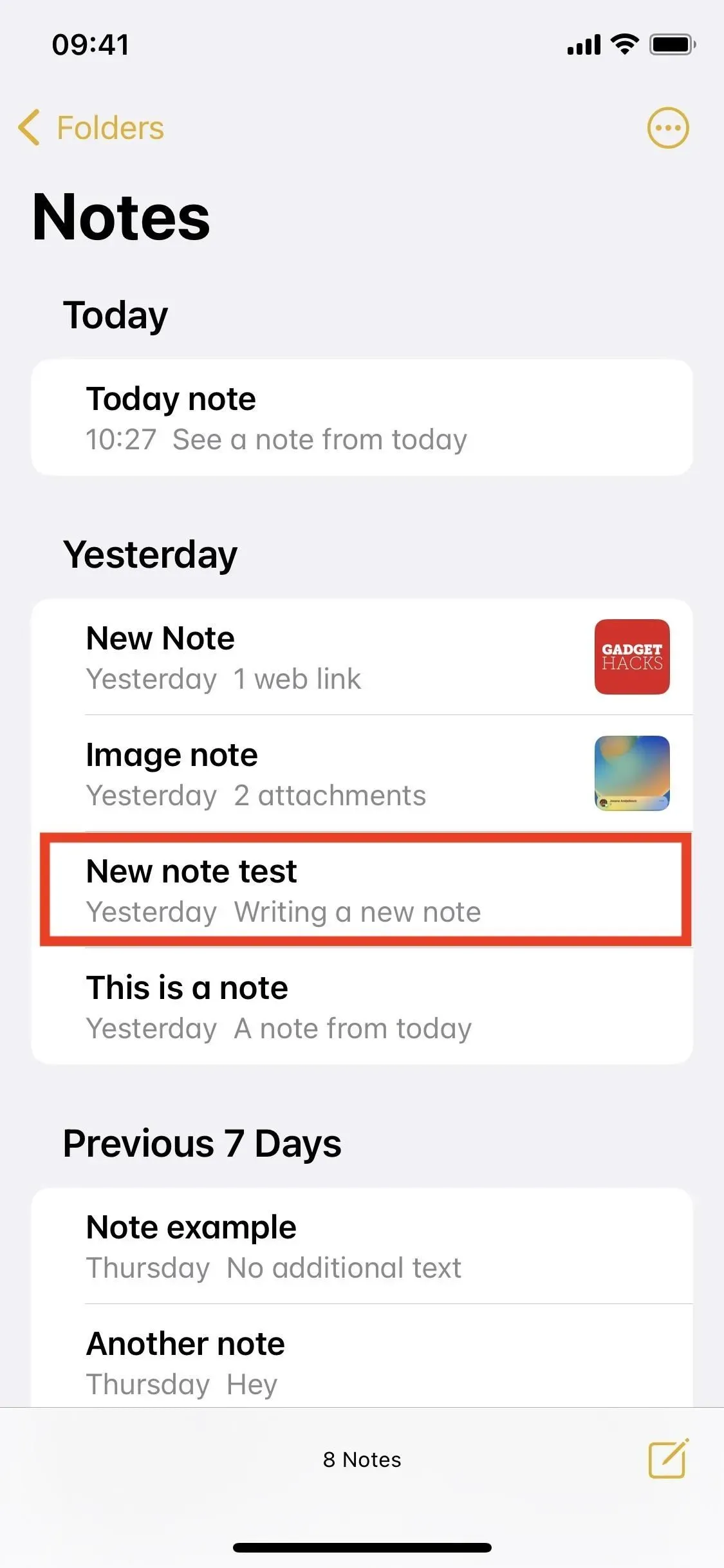
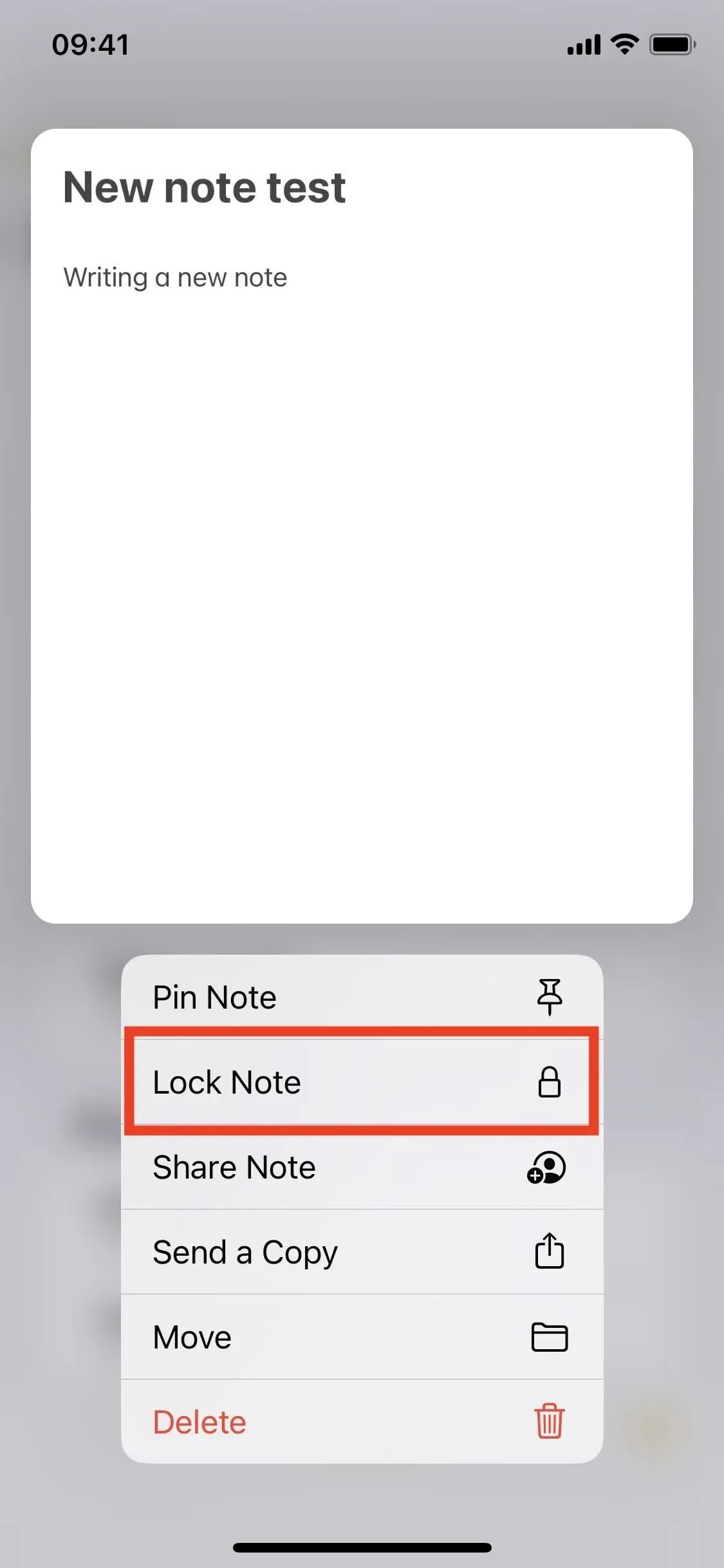

You can also find the new option via Settings -> Notes -> Password -> Use Device Password. You may also see the “Switch to device password for your locked notes”splash screen when you open notes that use a custom password.
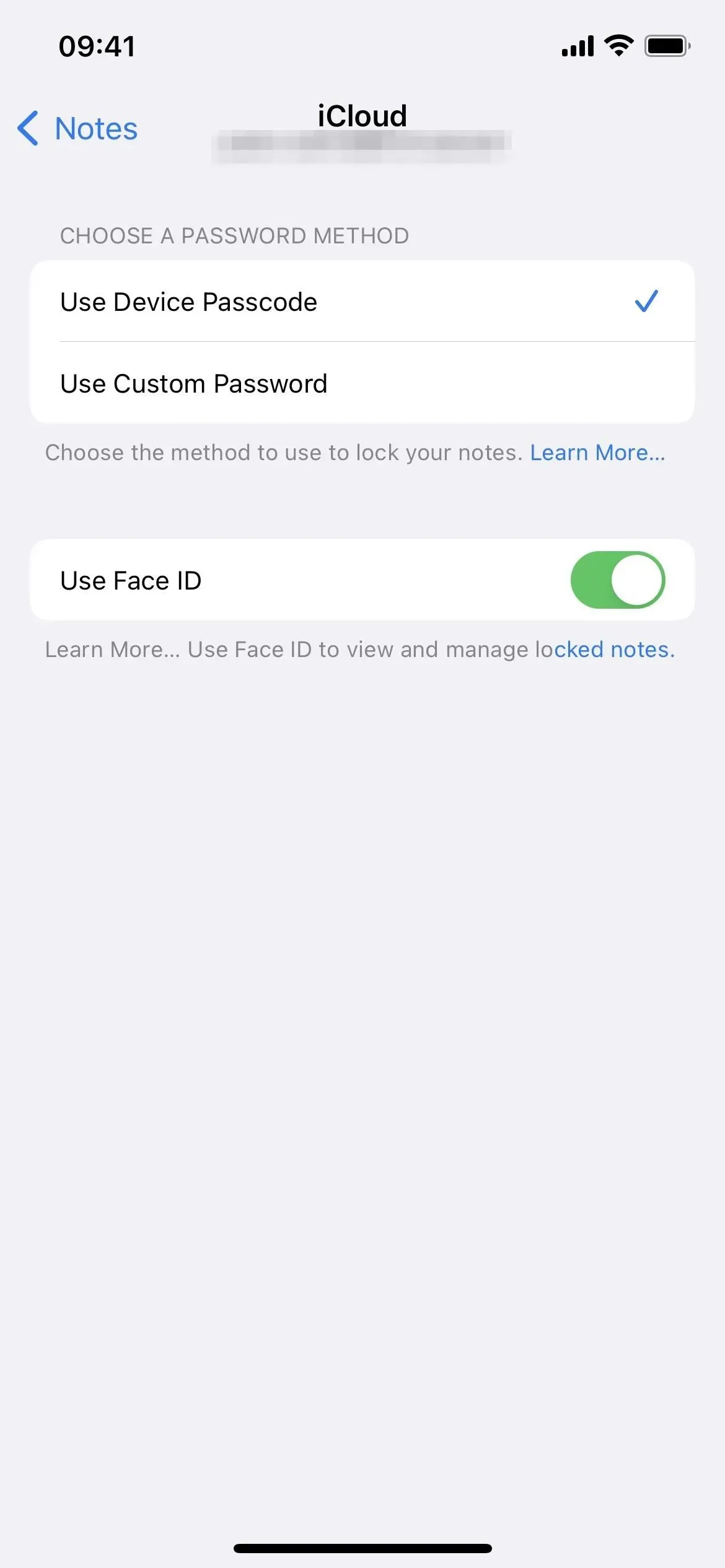
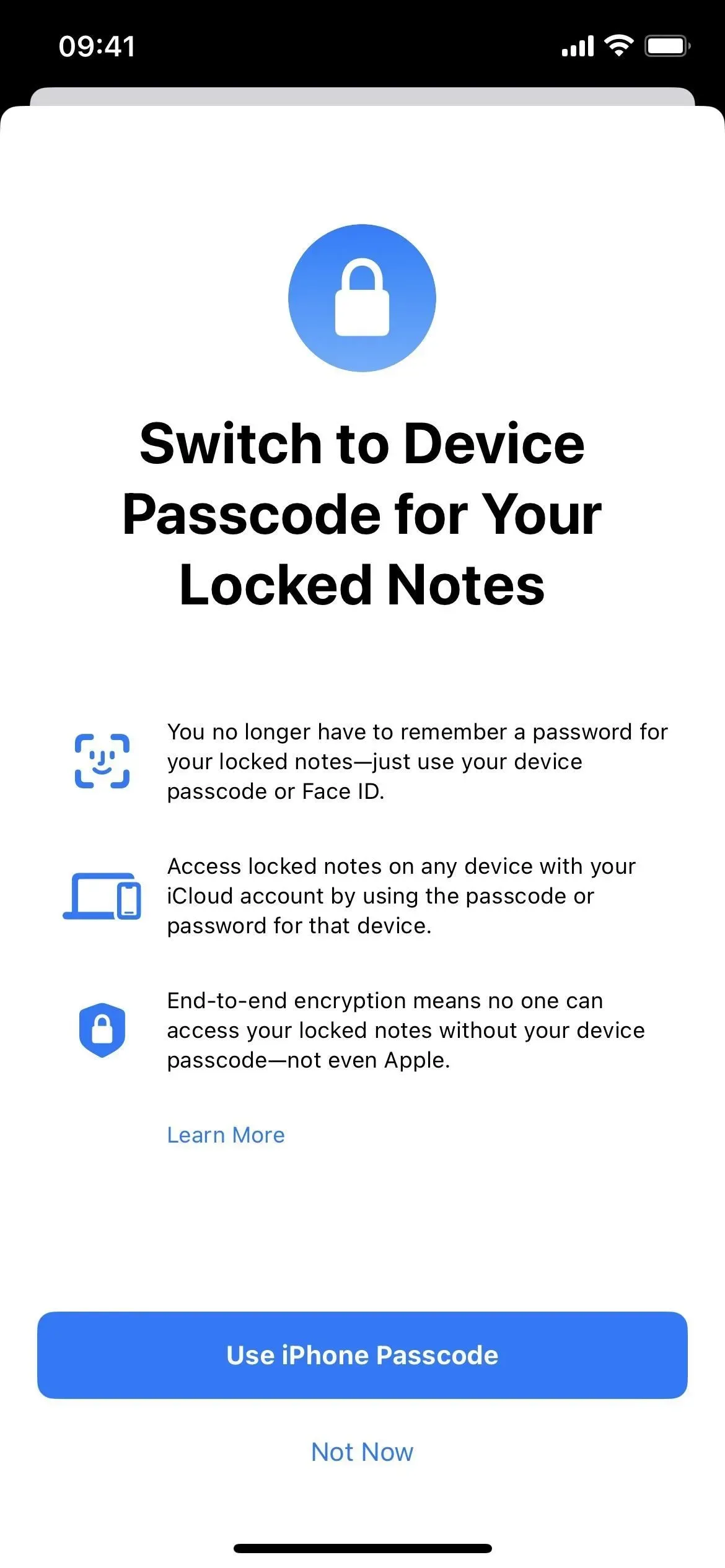
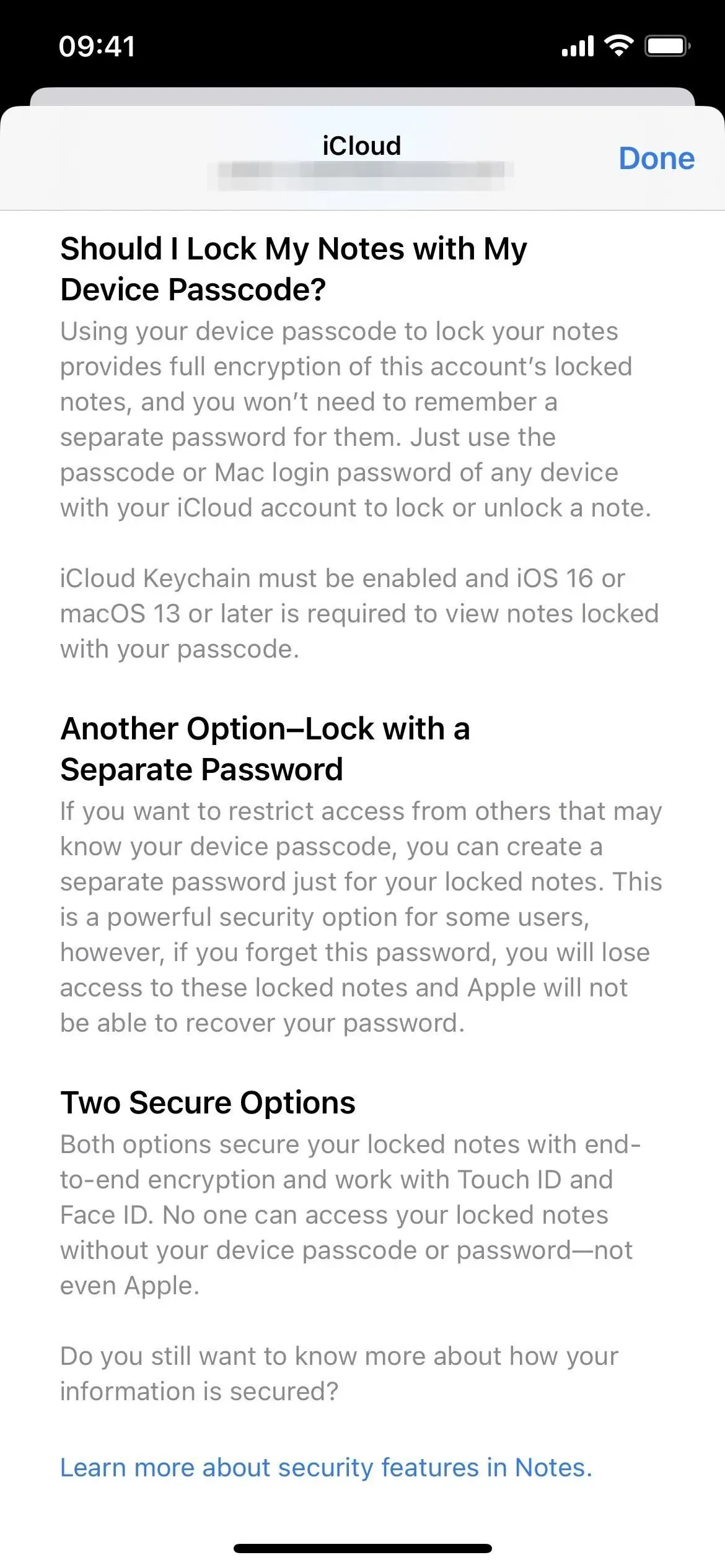
Just like with a custom passcode, using your iPhone’s passcode will unlock all notes in the Notes app, and you can lock one note to lock them all back. If you want more security, you can use the old trick of resetting your user password to give new notes a new password while keeping the old password for old notes.
3. Folder creation has a new look
In iOS 15, when you click the icon in the bottom left corner of the Folders view to create a new folder, a small menu will appear where you can select New Smart Folder or New Folder. When the On My iPhone account is enabled, you’ll see either “iCloud”or “On My iPhone”instead, and clicking on either brings up options for various new folder types.
When you click on the new folder icon in iOS 16, a modal window will appear on the screen where you can name the new folder and either click Done to save it or choose Make to Smart Folder. When the On My iPhone account is enabled, you’ll also see iCloud or On My iPhone, but clicking either opens the same modal window.


4. There are more smart folder filters
Now whenever you click “Make to smart folder”you will see more filters to create smart folder. Previously, you were limited to organizing smart folders by tags, but now you can also filter notes by date created, date edited, shared status, @mentions, checklists, attachments, folders, quick notes, pinned notes, and locked notes.
- Tags: Select any tag, any selected tag, all selected tags, or no tags.
- Created Date: Select today, yesterday, last 7 days, last 30 days, last 3 months, or last year. You can also select a custom option for relative range, specified range, specific date, before a specific date, or after a specific date.
- Edit Date: has the same options as Creation Date.
- Shared: Select notes shared with anyone, specific people, or no one.
- Mentions: Select notes that mention you, someone else, specific people, or no one.
- Checklist: Select any of checklists, unverified, checked or not checklists.
- Attachments: choose any, photos and videos, scans, pictures, maps, websites, audio, documents, or no attachments.
- Folders: Select notes from the folders you choose, or skip notes from the ones you exclude.
- Quick Notes: Choose whether to include or exclude quick notes.
- Pinned Notes: Select whether to include or exclude pinned notes.
- Locked Notes: Choose whether to include or exclude locked notes.
When you enable a filter, it moves from the Select Filters section to the new Enabled Filters area above it. There’s also an option at the top of the filter menu to enable notes that match any or all of the filters, giving you even more control.

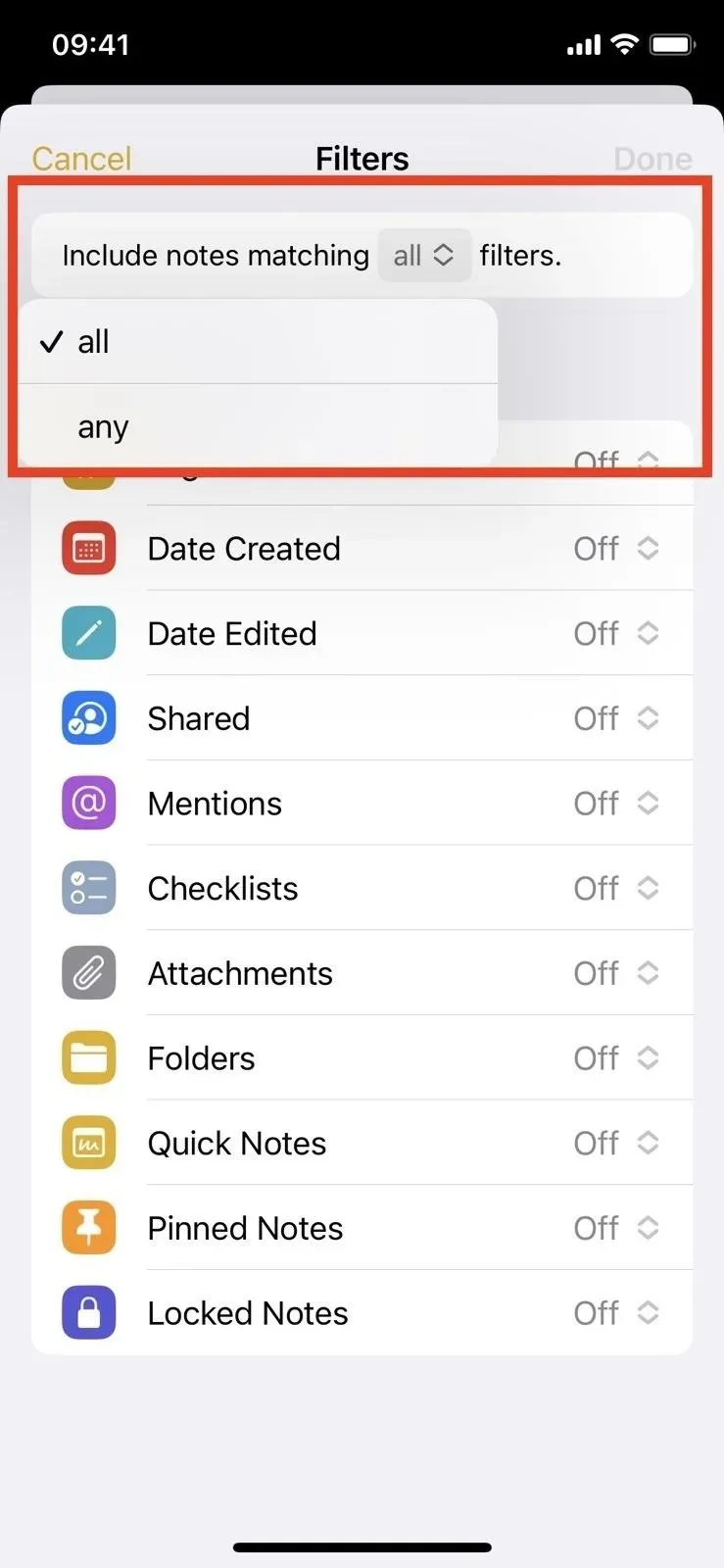
5. Folder options have a new look
In any folder, you can tap the ellipsis icon (•••) to open the folder options. Now, instead of a modal sheet that appears at the bottom of the screen, you get a smaller menu of quick actions. Clicking “Sort Notes By”will open the Quick Actions menu with more options, just like before. Some minor changes have also been made to these options, such as:
- Choosing to sort by “Title”gives you the options “Ascending”and “Descending”instead of “A to Z”and “Z to A”.
- Choosing to sort by one of the date filters gives you the options “Newest first”and “Oldest first”instead of “Newest to Oldest”and “Oldest to Newest”.
- Selecting sort by one of the date filters will automatically group notes instead of one long list.
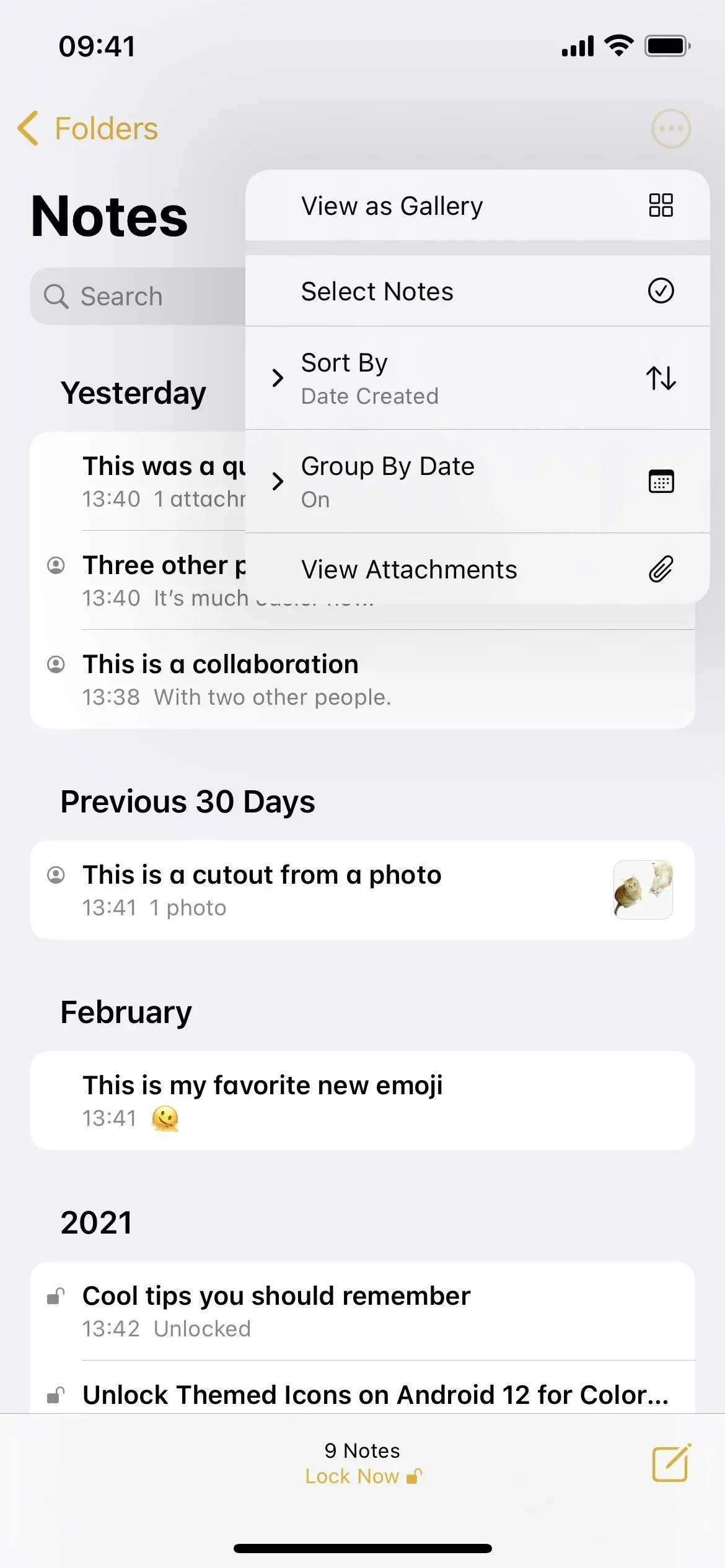
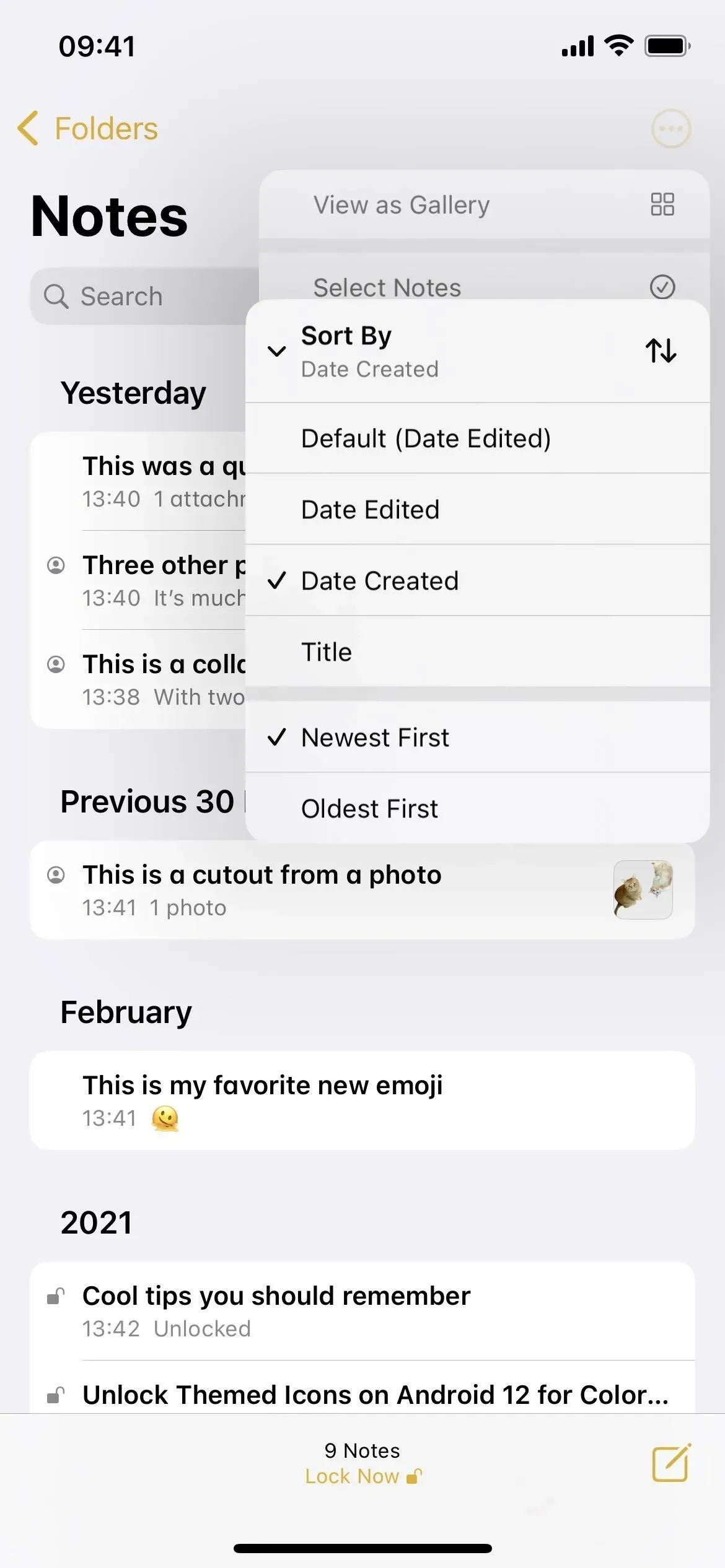

6. You can group notes by date
If you missed the last part of the previous section, notes are automatically grouped by date when sorted by any date filter. It used to be just one long list or gallery, but now there are sections that can be broken down. You can revert back to the old view by clicking “Group By Date”and “Turn Off”in the folder options menu. When enabled, you will see chronological categories such as “Today”, “Yesterday”, “Previous 30 days”, “February”, “2021”, etc.
You can change the default option for “Group By Date”by going to Settings -> Notes and toggling the toggle on or off. This switch also controls the grouping of Everyone folders, which do not have sorting options like other folders.
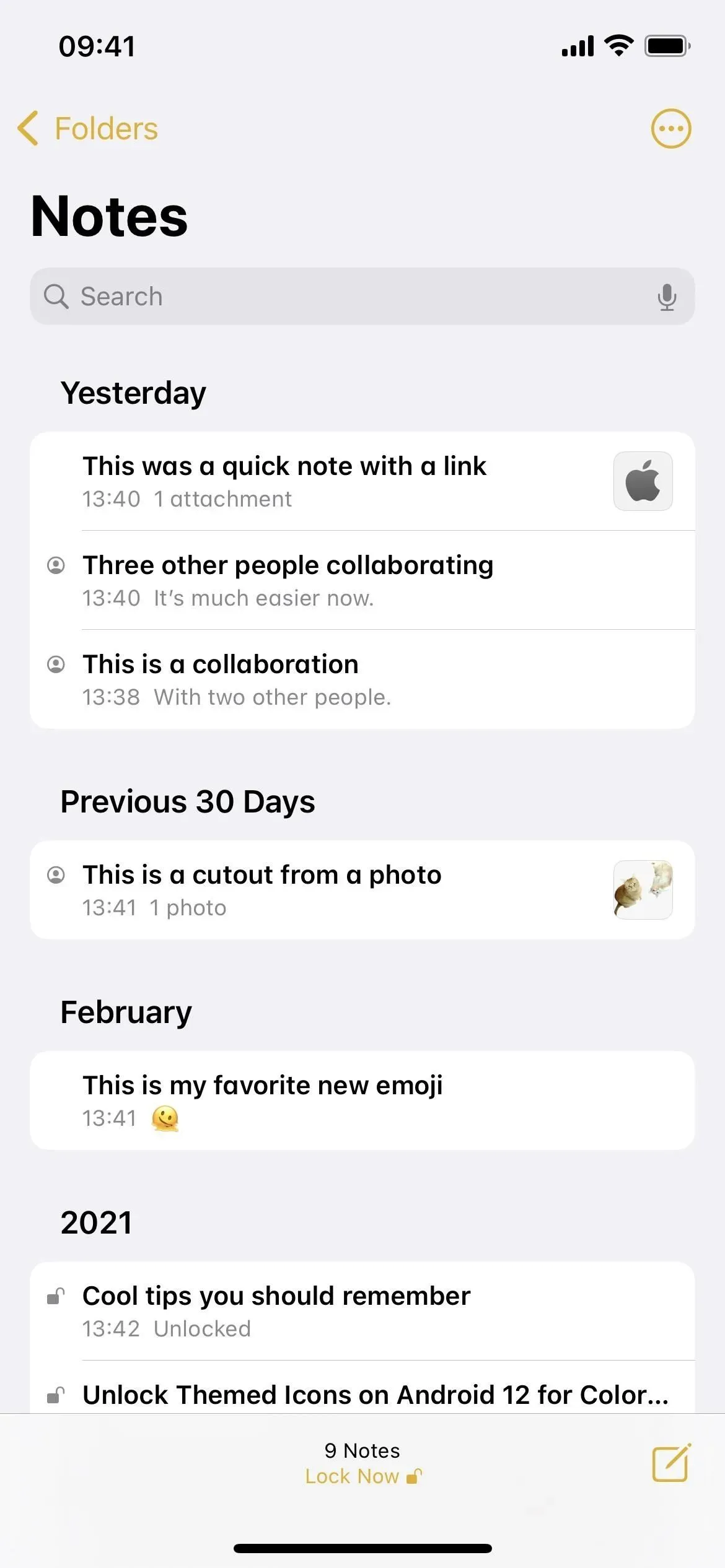
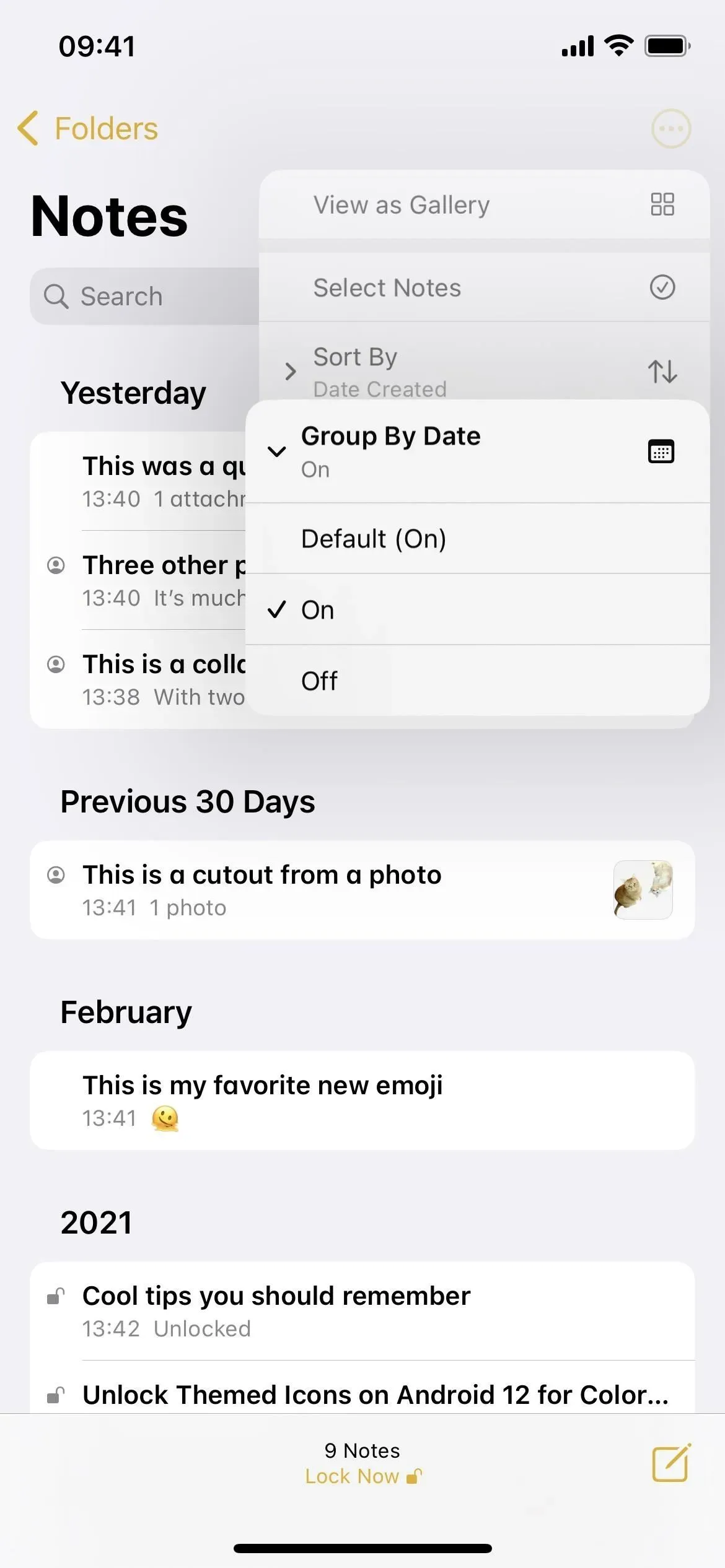
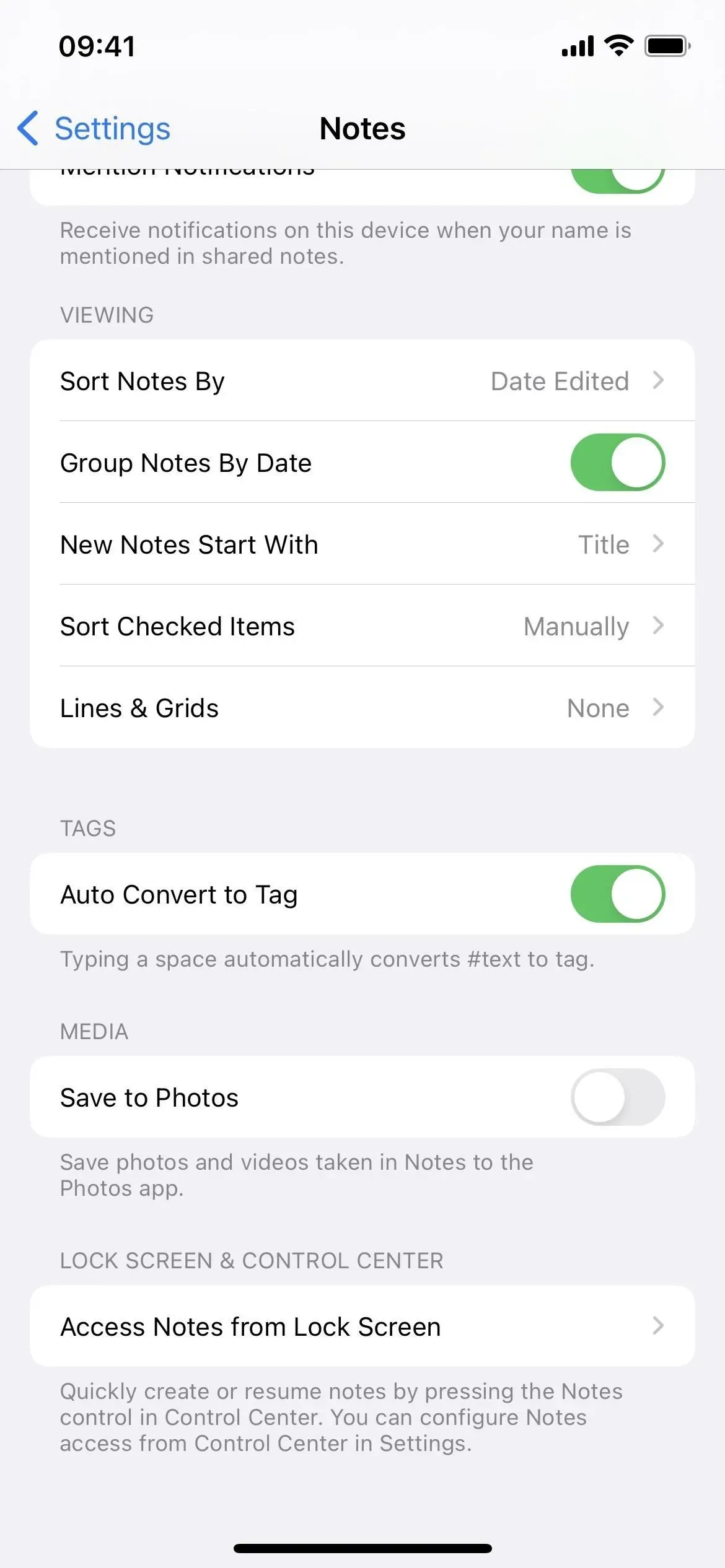
7. Sharing options have a new look
Another visual change: You can simply click the share button on a note to open sharing options, instead of clicking the ellipsis (•••) followed by Share note or Send a copy. If you long press a note in a folder, you’ll only see “Share note”and not “Send a copy.”This is because the copy option is part of the new share menu.
The sharing options menu is now a normal sharing sheet, but above AirDrop contacts there is a section where you can choose to Collaborate or Send a copy. When collaborating, you’ll see a link to advanced permission settings. Minor change: “Anyone can add people”is now “Allow others to invite”.
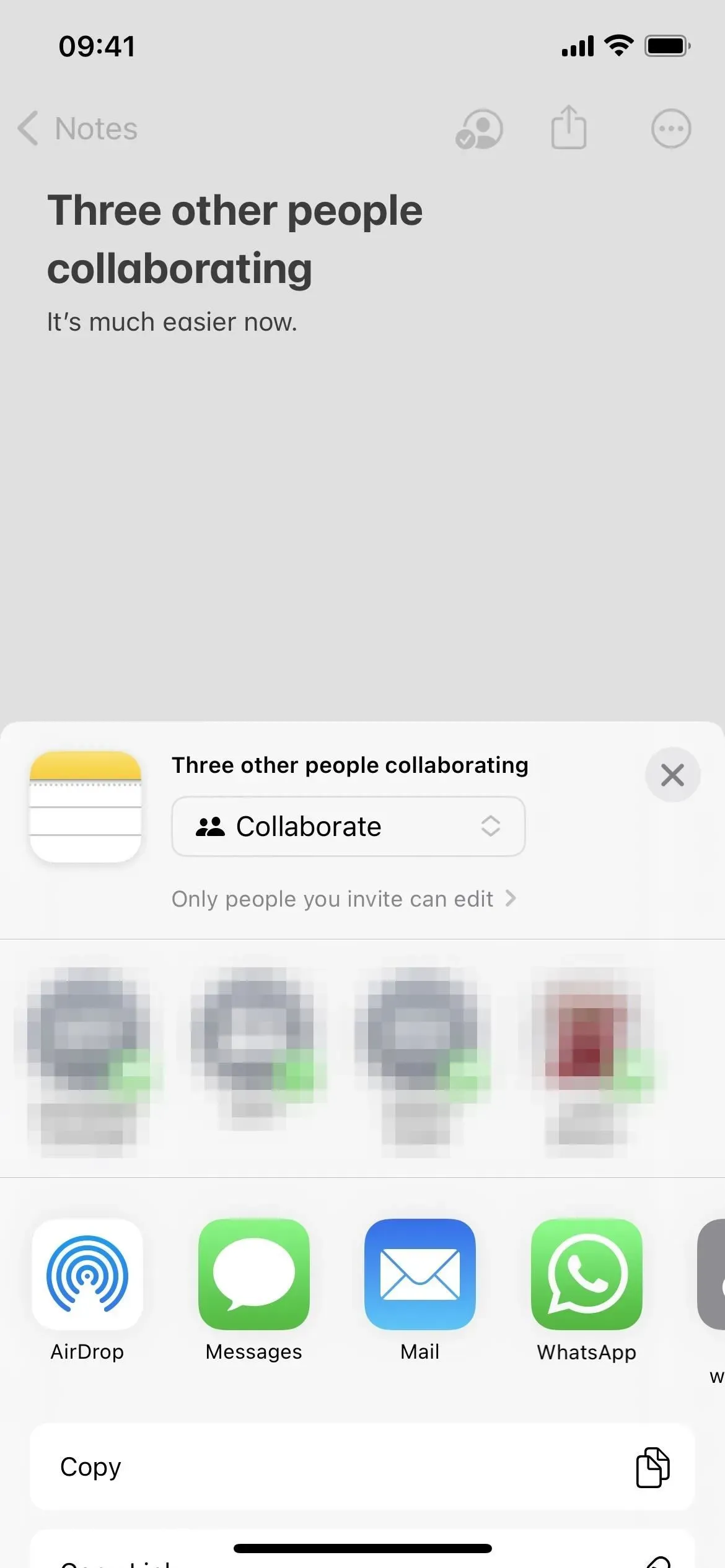

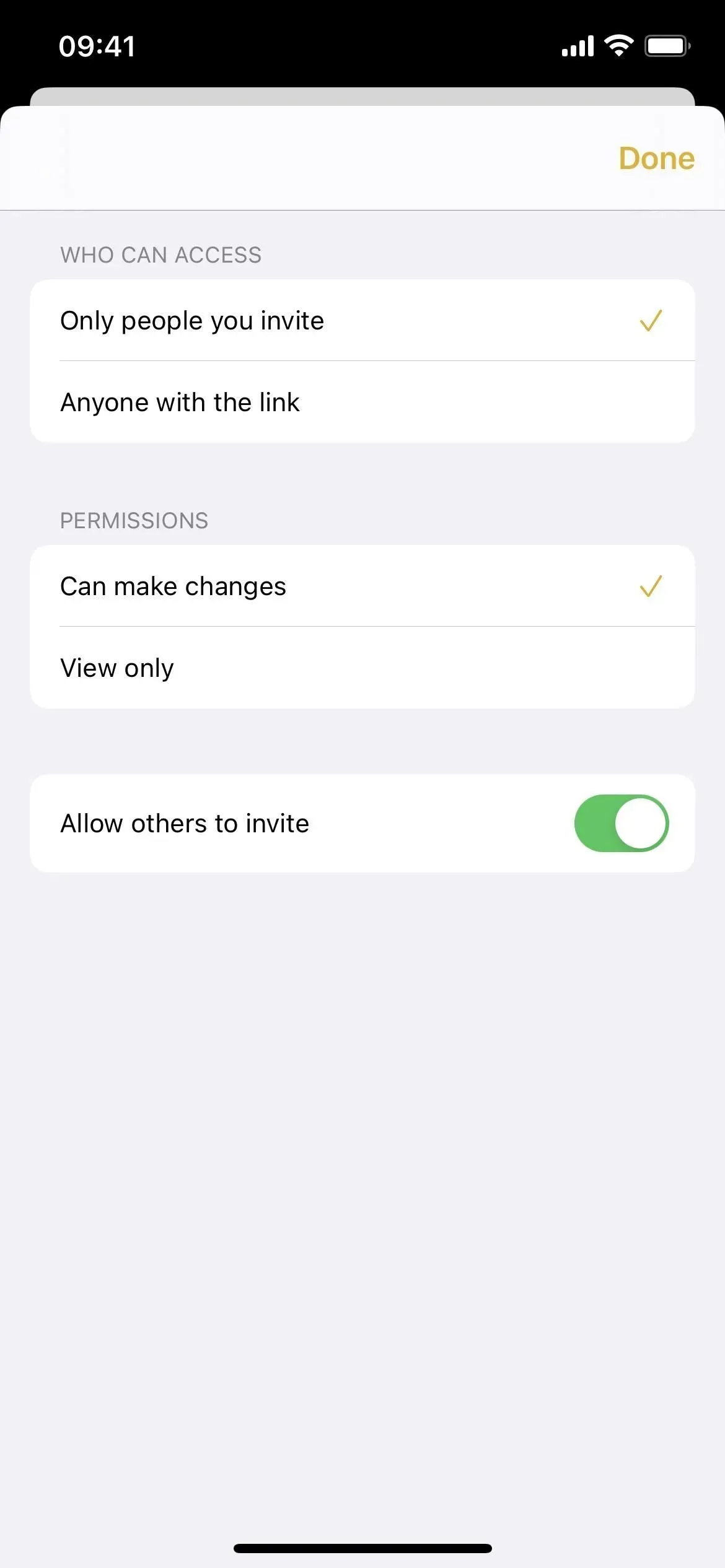
8. You can partner with anyone who has a link
With iOS 16, you can finally share a note with anyone using a link instead of manually inviting people. This makes it easier to share with larger teams, and you can still apply the same permissions to people with links as you would to specific collaborators.
When you open the shared sheet, select “Collaborate”and open permissions, you will see a new “Who can access”section with “Only those you invite”and “Anyone with the link”options.

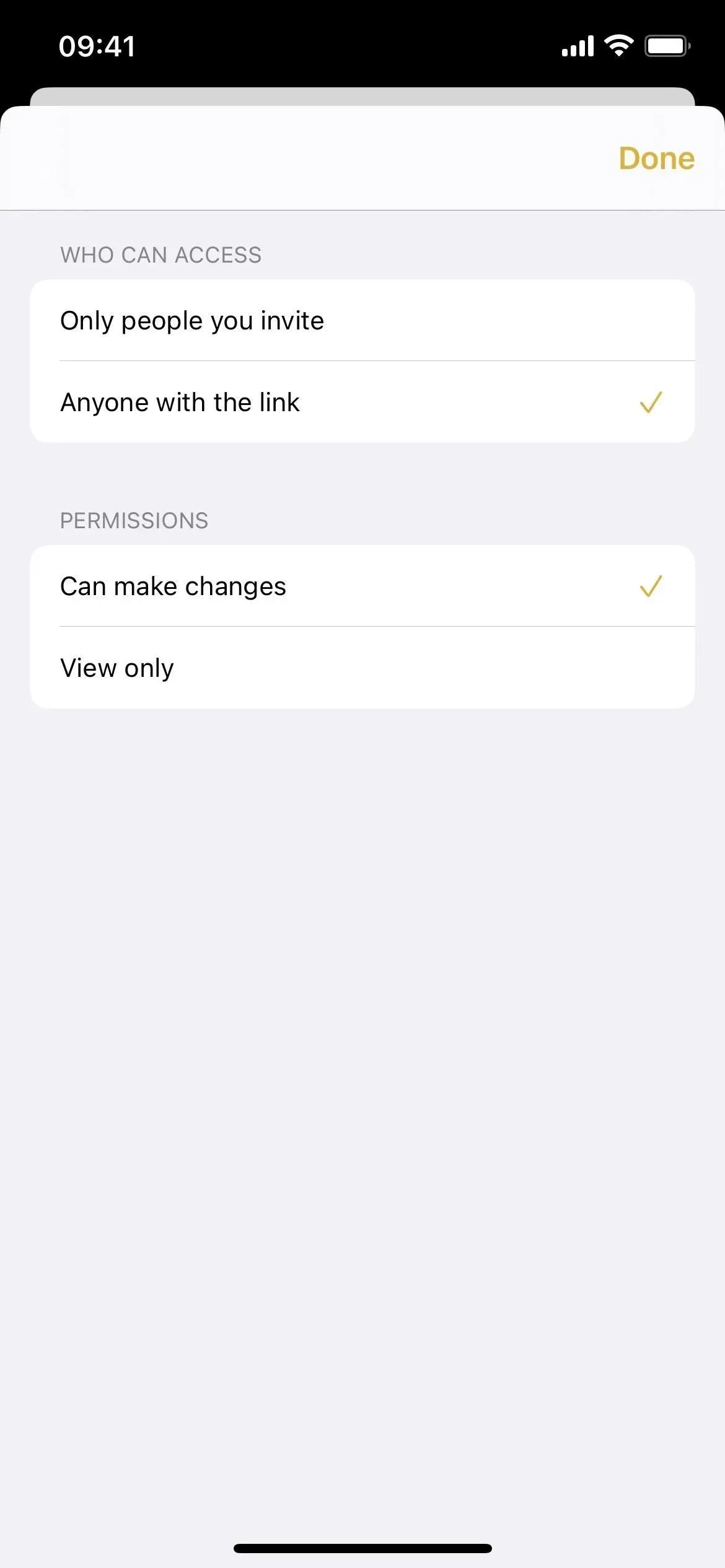
9. You can start a chat directly from shared notes
While in a shared note, you can tap the collaborators icon to view activities and highlights or manage sharing options. Now you can also start a new chat in Messages or start a FaceTime audio or video call with someone in the group.
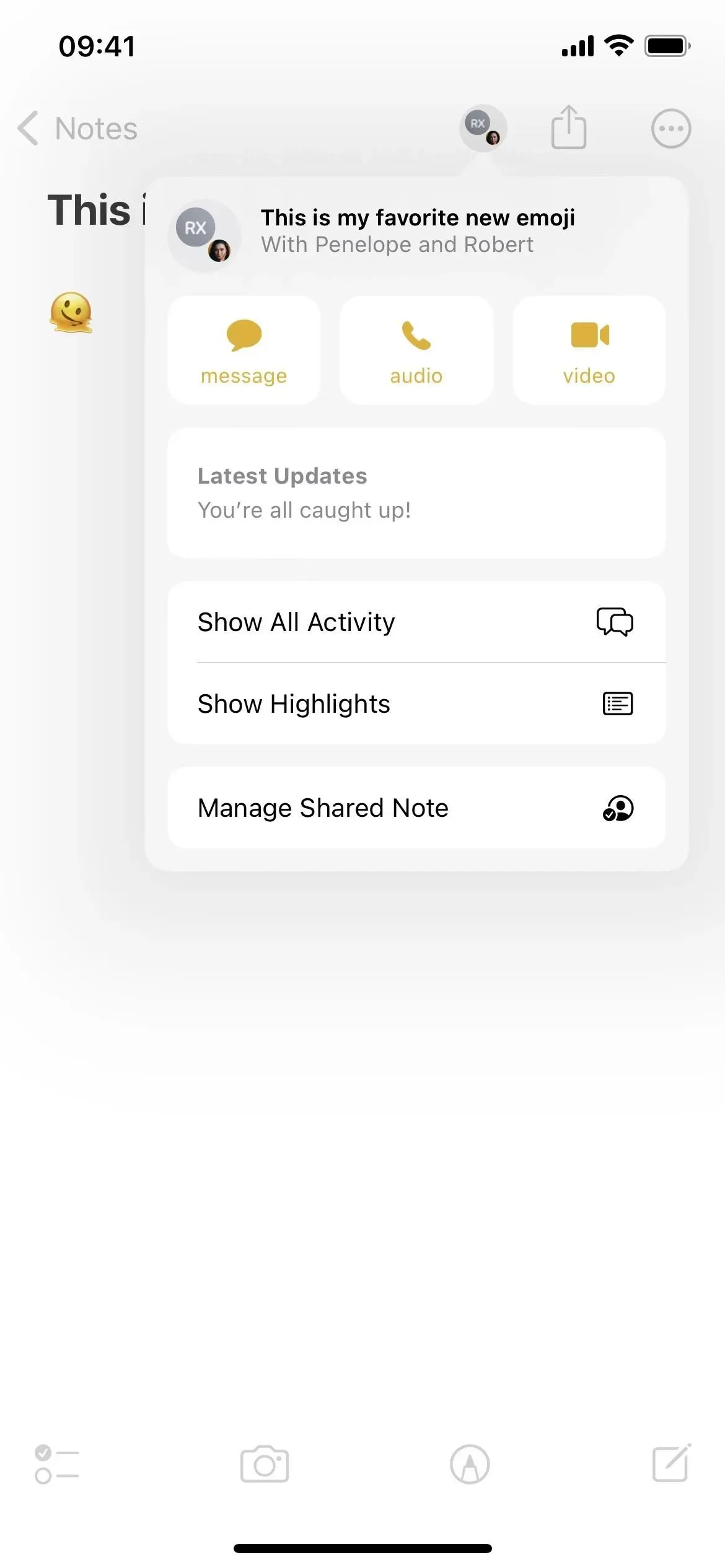

10. Extended invitations for cooperation
Whenever you send an invitation to collaborate on a note in Messages, everyone in the thread is automatically added to the note if everyone is using iOS 16, iPadOS 16, or macOS 13 Ventura. And every time someone makes a change to a shared note, you’ll see updates at the top of the Messages conversation, and you can tap on it to navigate to the note.
You can also send an invitation to collaborate on a note during a FaceTime call and all participants will be automatically added to the note when using the new software.

11. You can easily find collaboration in messages
While this may be more of a messaging feature, it’s worth mentioning. When you open the details of a regular chat or group chat in Messages, you will now see a Collaborate section if you’re collaborating with them in Files, Keynote, Numbers, Pages, Reminders, Safari, and Notes. They used to show up as iCloud links in the Links section, so it’s easier to find shared documents now.
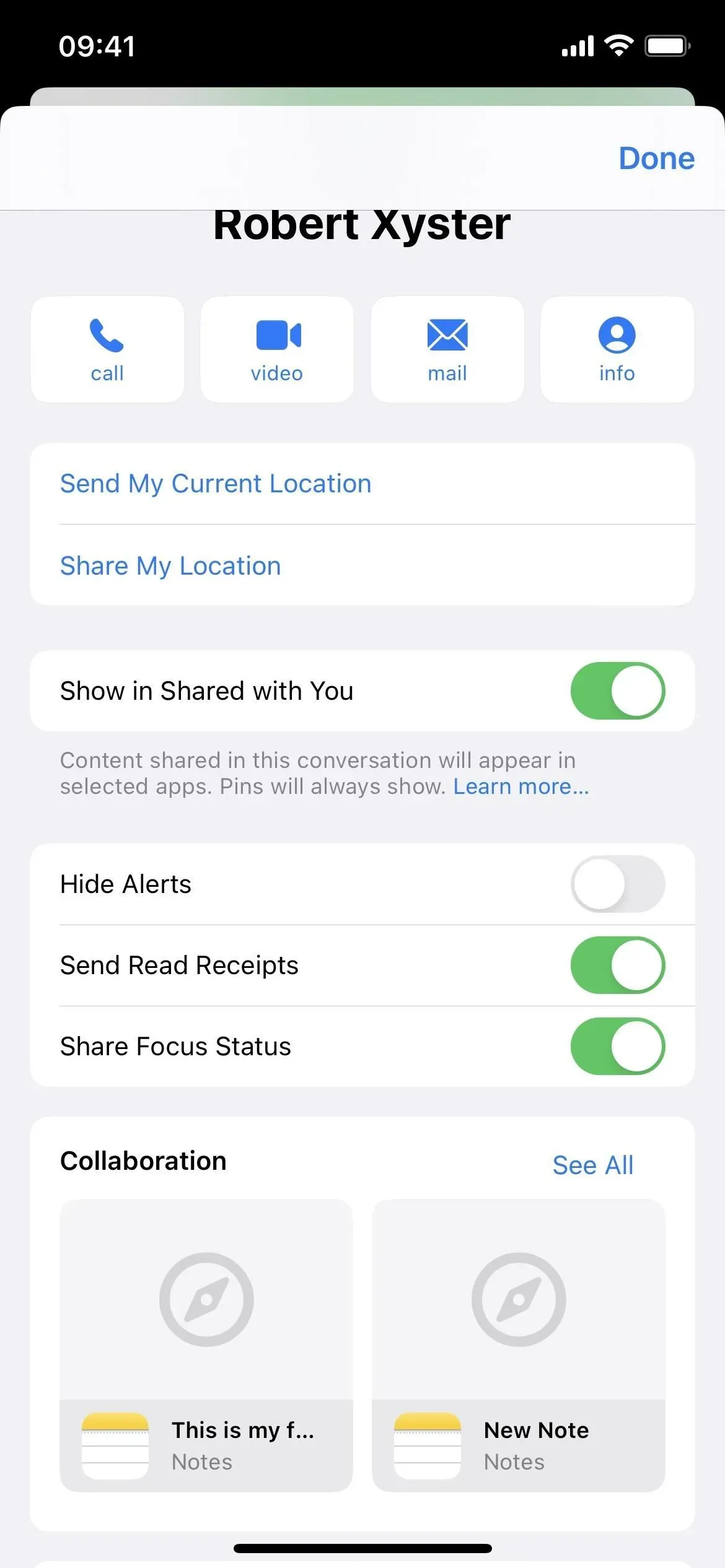
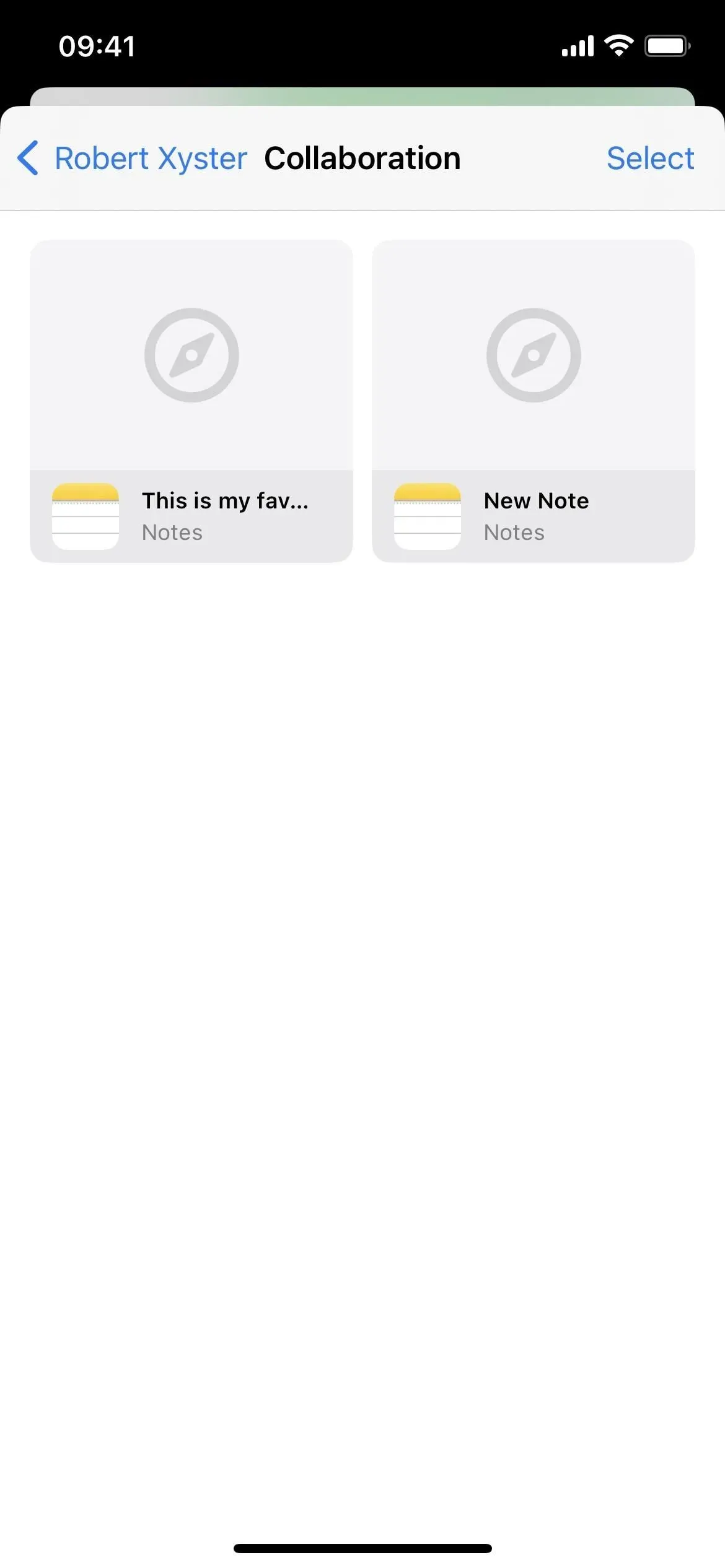
12. There is a new shared notes folder
Whenever you have a note that you’ve shared or collaborated on, it will appear in a new Shared smart folder in the main folder list in Notes. This way you can easily find each collaboration without having to create a smart folder for it.


13. You can add text, caption or shapes while drawing
Tapping the pen icon on the toolbar or keyboard in a note opens the handwriting tools. Everything is the same, except there’s now a plus (+) button that lets you enter text, add a caption, or insert a shape.
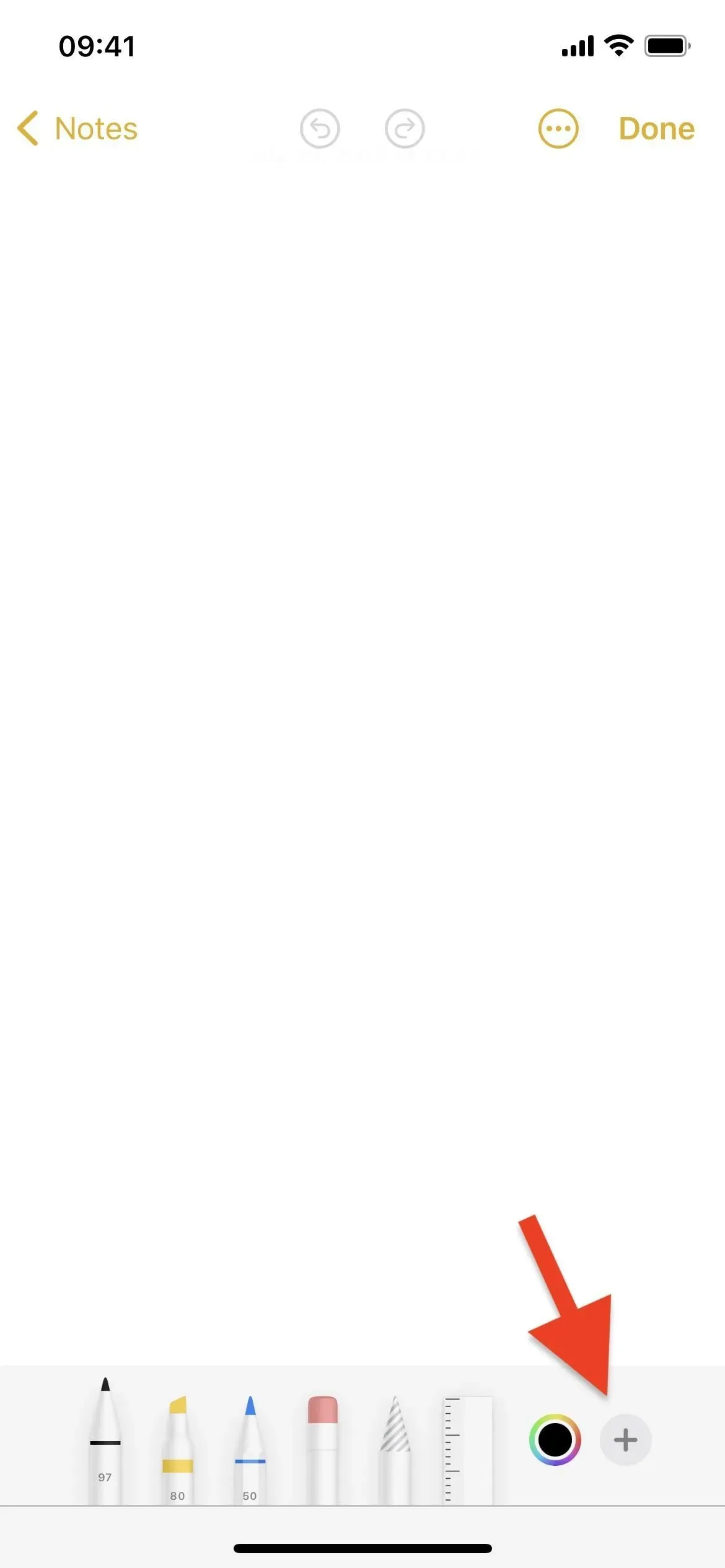

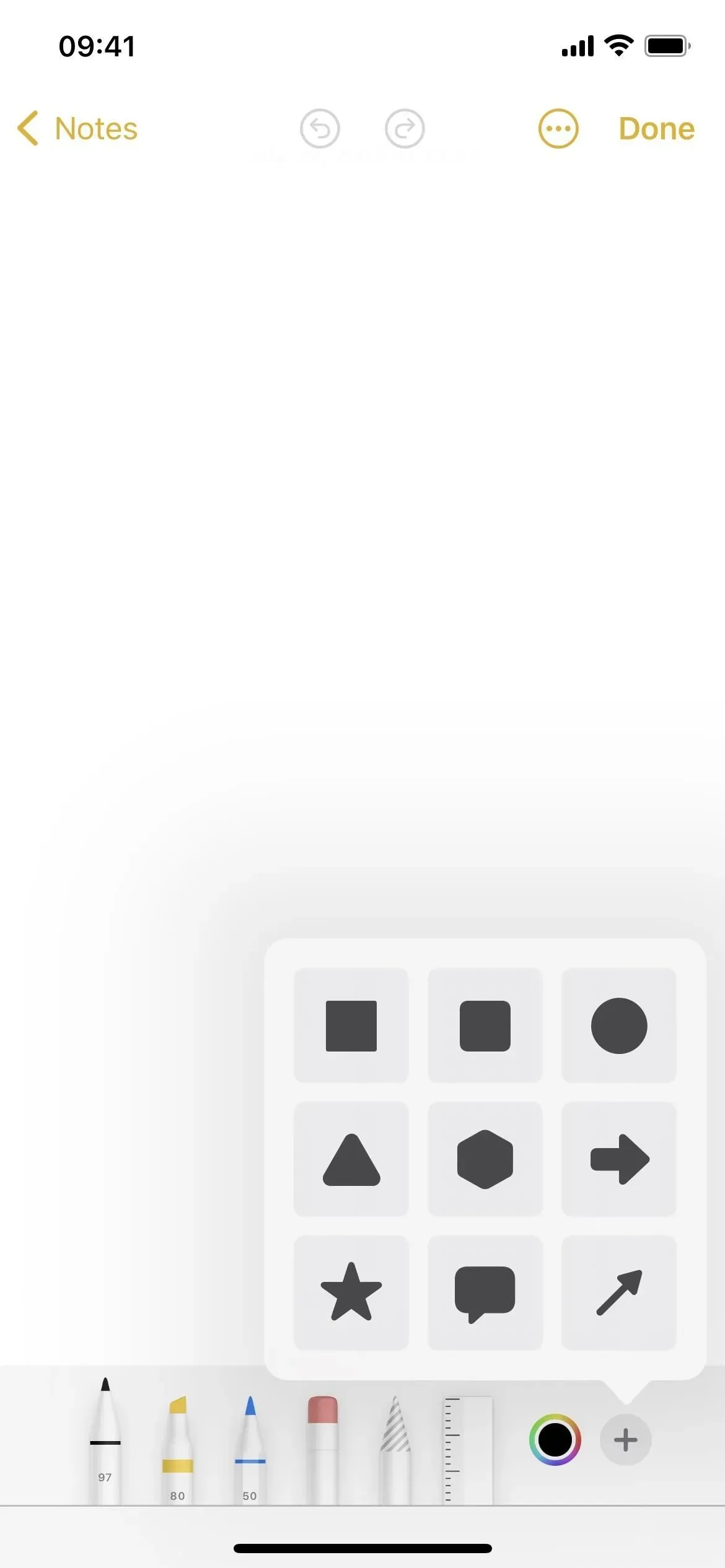
Leave a Reply